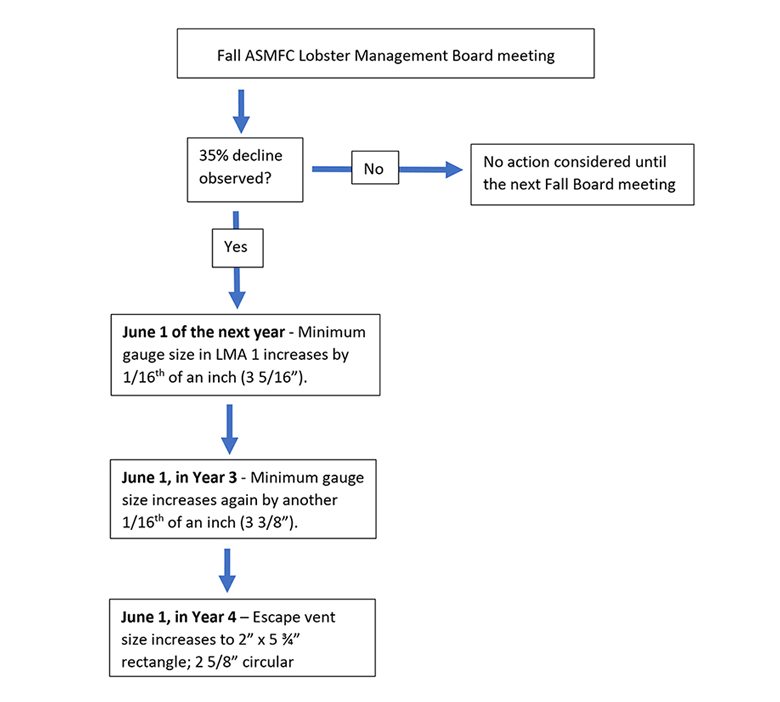
An interstate regulatory commission has approved a rule that could change the minimum and maximum sizes for lobster harvesting as a means of protecting the species. The change was adopted May 5 by the Atlantic States Marine Fisheries Commission’s lobster management board.
The new rule establishes a trigger mechanism to implement management measures—specifically gauge and escape vent sizes—to provide additional protection of the Gulf of Maine and Georges Bank spawning stock biomass. It also implements changes to management measures for two lobster conservation management areas and outer Cape Cod to improve the consistency of regulatory measures.
The commission board said it adopted the new rule as “a proactive measure to improve the resiliency of the Gulf of Maine-Georges Bank stock.”
Since 2012, lobster settlement surveys throughout the gulf have generally been below average in all areas.
Since the early 2000s, lobster landings have rapidly increased, with the Maine harvest increased from 57 million pounds in 2000 to a record high of 132.6 million pounds in 2016. Landings here have declined slightly but were still high at 97.9 million in 2020 and 108.9 million in 2021.
Since 2012, lobster settlement surveys throughout the gulf have generally been below average in all areas. These surveys, which measure trends in the abundance of juvenile lobsters, can be used to track populations and potentially forecast future landings. Persistent low settlement could foreshadow declines in recruitment and landings.
The new rule establishes a mechanism where changes to the current gauge and escape vent sizes will be implemented automatically based on observed changes in the abundance of juvenile lobster. If the abundance index declines by 35% from the three-year average from 2016-2018, a series of gradual changes to gauge and vent size will be initiated in the following fishing year.
These include two increases to the minimum gauge size in the Gulf of Maine and a single decrease to the maximum gauge size in offshore federal waters and outer Cape Cod.
The gauge and escape vent size changes are intended to increase the proportion of the population that is able to reproduce before being harvested, and to enhance stock resiliency by protecting larger lobsters of both sexes.
Additionally, the rule implements measures that resolve discrepancies between the regulations for state and federal permit-holders, provide a more consistent conservation strategy, and simplify interstate commerce and enforcement across management areas.
Specifically, the rule implements a standard V-notch definition of 1/8 inch with or without setal hairs in lobster conservation management area 3 and outer Cape Cod, and a standard maximum gauge size of 6-¾ inches for management area 3 and state and federal permit holders in outer Cape Cod. It also modifies the management program so that for conservation management areas 1 and 3 permit holders, states must limit the issuance of trap tags to equal the harvester trap tag allocations unless trap losses are documented.
The implementation date for these changes is Jan. 1.





